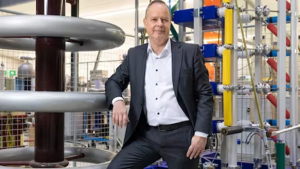Powering the Future: Renaissance of High Voltage Technologies
 By Professor Peter Vaessen
By Professor Peter Vaessen
This article is based on the guest lecture “Essential high voltage and high-current knowledge”, given for the Sustainable Energy Supply (EE2E210) course. It highlights the importance of understanding high-power technologies as being one of the key enablers of the energy transition towards a sustainable, affordable, and reliable electric power supply.
High voltage is often associated with danger and life threatening. In a lot of common everyday equipment like traditional cars with internal combustion engines and microwave ovens high voltage technology is present. It is also used in medical diagnostics, industrial disinfection, and the chip industry. High voltages and associated high electric fields are also very common in nature, think eg, of lightning but also inside semiconductor devices. High voltage is essential to allow for long distance electricity transmission and grid connection of large-scale renewable generation and batteries.
The source of electric fields and voltage is charge. Charge is a fundamental property of nature and is measured in Coulombs [C]. A 1.5V penlight battery contains around 10,000C and a typical lightning bolt of 1MV annihilates 2C. Charge creates an electric field [V/m] and when this is measured along a path a voltage is created. Moving charge [C/s] or current creates a magnetic field. The energy density of the magnetic field is about 100,000 times bigger than that of the electrical field, this explains why all energy conversion machines like motors, generators and transformers are magnetically based.
A safe voltage for humans to touch is 50V and a safe current flowing through the body is 30mA. Voltages to ground of more than 1000V ACrms or 1500V DC are considered high voltage. For current there is no such sharp definition, in general currents more than 100A are considered as high current.
When the electric field strength becomes too high, the gaseous, liquid, or solid insulation breaks down with a spark and a conducting channel is created to ground. If the spark is fed from a strong power source a short circuit current starts to flow and creates an arc. A power arc is a plasma with a temperature of more than 6000K, hotter than the surface of the sun, is very destructive and must be switched off as fast as possible to prevent further damage. If the arc current is above 1000A the arc starts moving and becomes even more dangerous.
Click here to read the complete article.